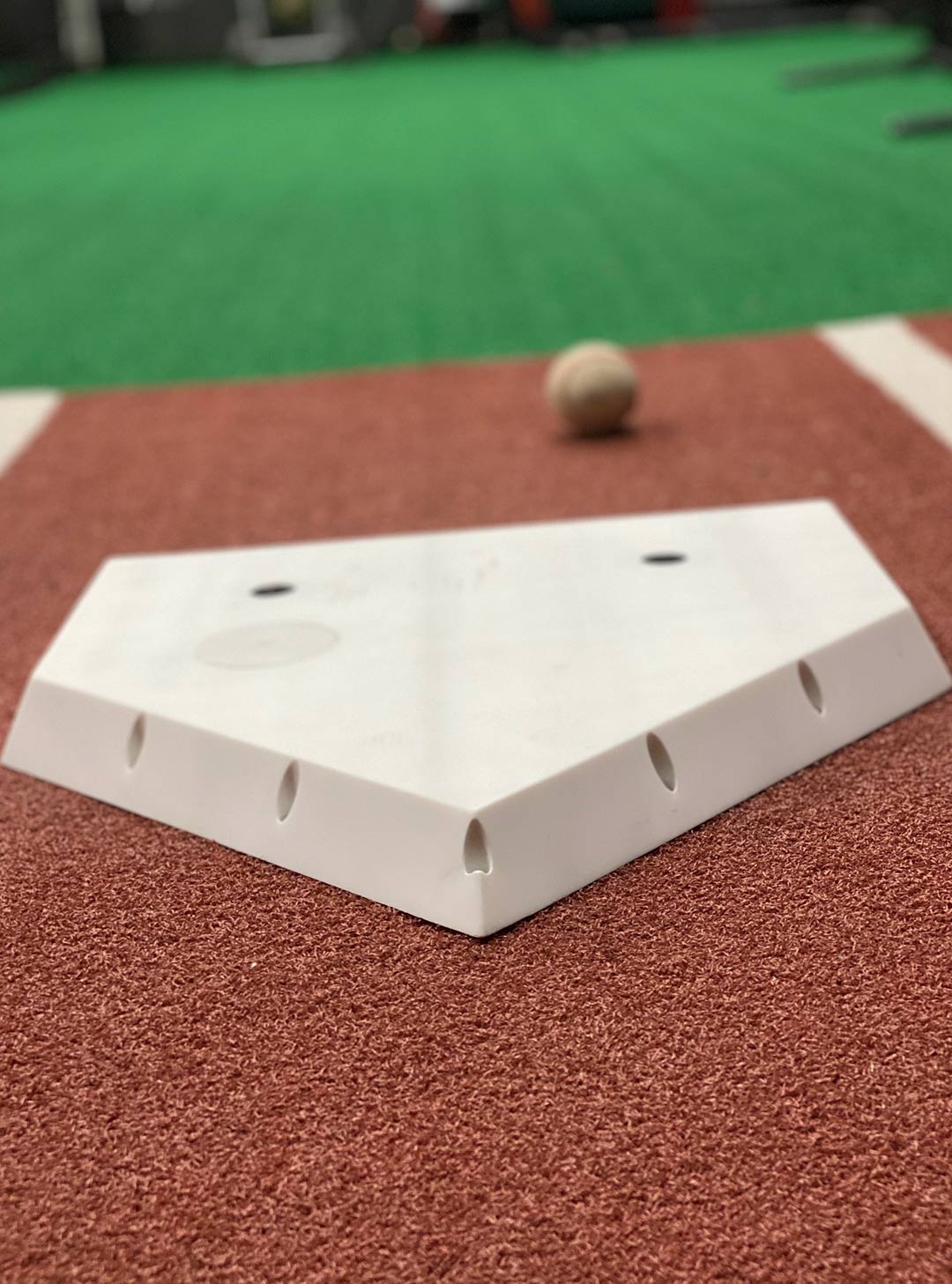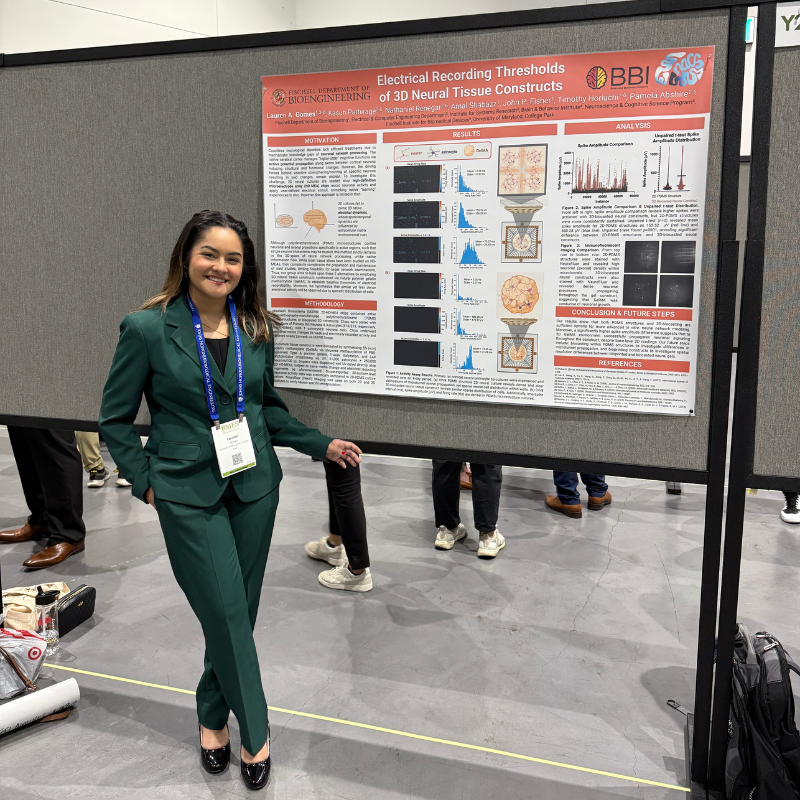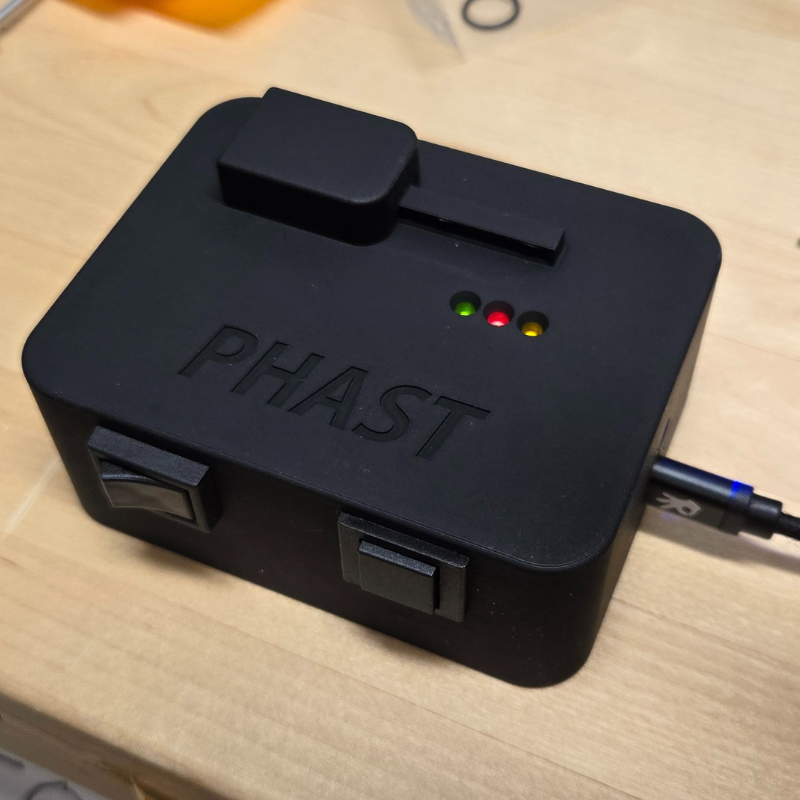News Story
Striking Up an Innovative Idea

The camera from Plate Vision, the electronic home plate (below) developed by UMD researchers John R. Rzasa and Christopher C. Davis and CEO Todd Levitt, captures a bat striking a ball for a hit. (GIF and photo courtesy of John R. Rzasa and Todd Levitt)
Fans’ recorded cheers in empty stadiums. No high-fives. Sixty games instead of 162. Thursday night, MLB players will take the field after a nearly four-month delay to begin an unprecedented, COVID-shortened season.
Beyond the diamond, UMD researchers and an entrepreneur teamed up with their own pitch to revolutionize the game—which happens to be social distancing-friendly.
Christopher C. Davis, electrical and computer engineering research professor, and John R. Rzasa ’05, M.S. ’07, Ph.D. ’13, associate research engineer and chief engineer at the Robert E. Fischell Institute for Biomedical Devices, invented Plate Vision, an electronic home plate that automatically calls balls and strikes and lets the umpire stand back as it sends real-time results to game officials, coaches, parents and fans. With the help of CEO Todd Levitt, their team at Freestate Optics, LLC has refined its technology in recent months, switching to a custom camera configuration and enhancing how the stats for each pitch are delivered to spectators of all sorts.
“A major stress point for players and fans is the judgment of what is considered a ball or strike by the umpire, since it can change with each pitch,” Levitt said. “Plate Vision gives transparency to every call and ultimately takes that pressure off the umpire. It allows everyone to focus on and enjoy the game as it is being played. And we can do that for every level of play, from Little League all the way to the professionals.”
Though Davis and Rzasa aren’t big baseball fans, Davis first came up with an idea for automating the ump in 2012 after a parent asked if he could lower the burden of the ball/strike call. With Maryland Industrial Partnership and Maryland Innovation Initiative grants, he and Rzasa developed a device that used infrared emitters and sensors to determine each pitch’s location.
But because the beams of light that the sensor emitted were tight around the sides of the plate, it was better at detecting a baseball’s location inside the strike zone versus outside of it, meaning that it was good at catching all the strikes, but not every pitch thrown. The solution: Rzasa invented and placed a smart camera into the device, protected by the familiar, somewhat squishy rubber found in typical home plates, plus quarter-inch-thick sapphire windows.
“It’s what the screens on iPhones are made out of, so short of diamonds, they’re the next most scratch-resistant material,” Rzasa said. “So if you have people spiking them, running over them, whatever, it doesn’t matter.”
The camera captures an image showing exactly where the ball crosses the plate—whether it’s just a bit outside, painting the corner or right down the middle. That gives Plate Vision an edge over similar electronic strike zones, which often rely on cameras positioned throughout the stadium to compute the ball’s trajectory and approximate its location by “work(ing) back to say, ‘Well, it was going this fast at this angle. That means it was that far above the plate,” Rzasa said.
The Plate Vision image is sent to a smartphone controlled by an umpire, who can then focus on managing the game instead of judging balls and strikes (and getting chewed out when the crowd or players disagree). At some levels, especially in youth ball, the plate could even replace the ump altogether while coaches monitor the phone.
The product won the Best of Show award at the 2019 American Baseball Coaches Association Convention trade show. Collegiate Baseball, the publication that determines the winners, noted, “The time is quickly approaching when ball/strike calls will be made by machines, which will prevent the lion’s share of ejections during games.”
The Plate Vision crew had hoped to continue testing in the field and begin selling the plate in the spring, but COVID-19 threw them a curveball as sports shut down, leading them to realize unexpected benefits of the device.
“The demand for an automated umpire has been overwhelming, especially in the youth leagues,” Levitt said. “Plate Vision solves the issue of both the cost and availability of trained umpires. And while it wasn’t created to address social distancing, replacing the umpire with an automated plate solves that problem, too.”
The team is also focusing on how the device delivers a deluge of data. They switched from using Bluetooth and Wi-Fi to having the plate communicate with the cloud via cell signal, so anyone with a cellphone can connect to the device if needed. They’re also working on an app to help umpires, coaches, players and fans easily view and analyze each pitch’s location, speed and accuracy.
“The concept is awesome. The ability to have instant feedback on strike percentage is key,” said Corey Muscara, UMD assistant baseball coach. “The greatest quality for the players is there’s literally nothing different—all it does is give you data.”
This story originally appeared on Maryland Today.
Published July 22, 2020









